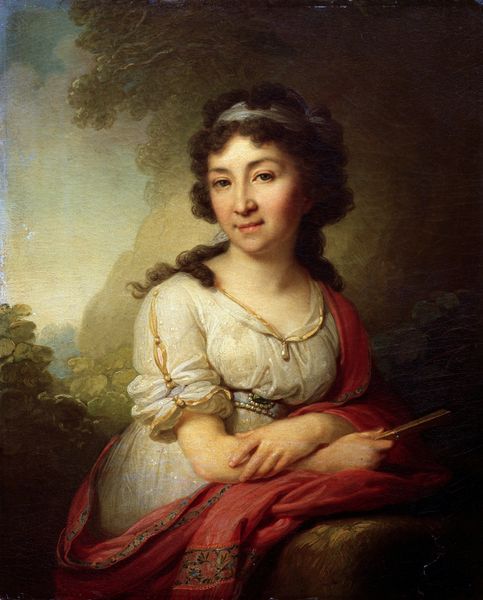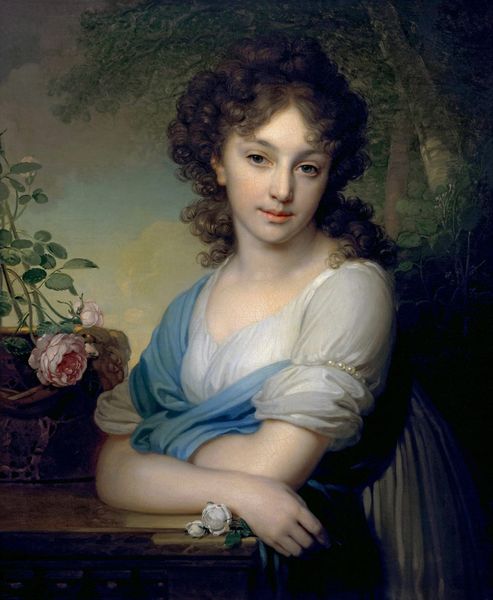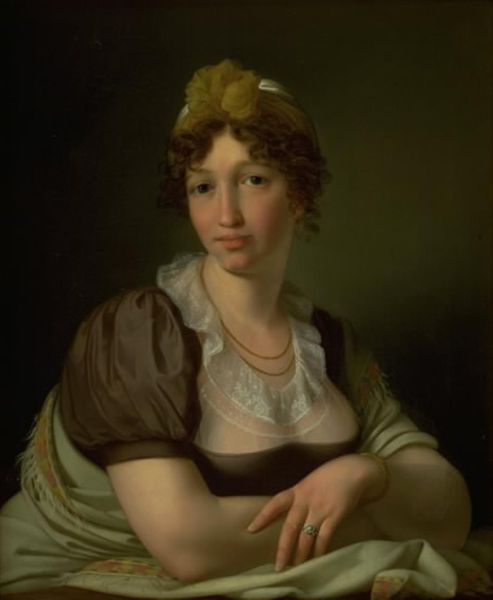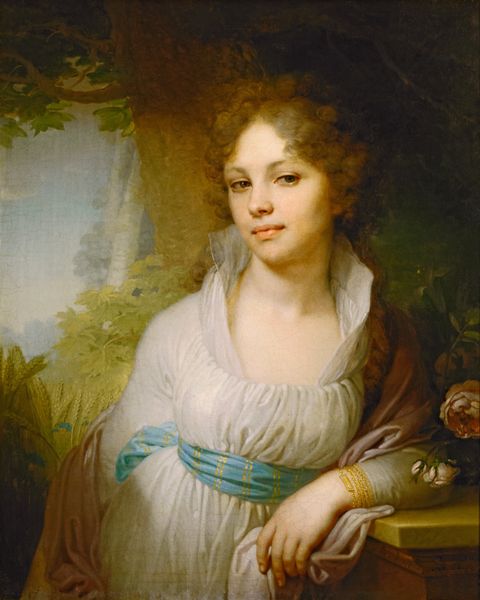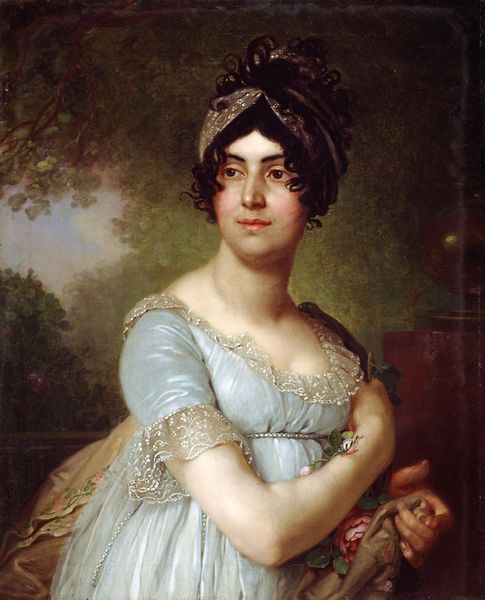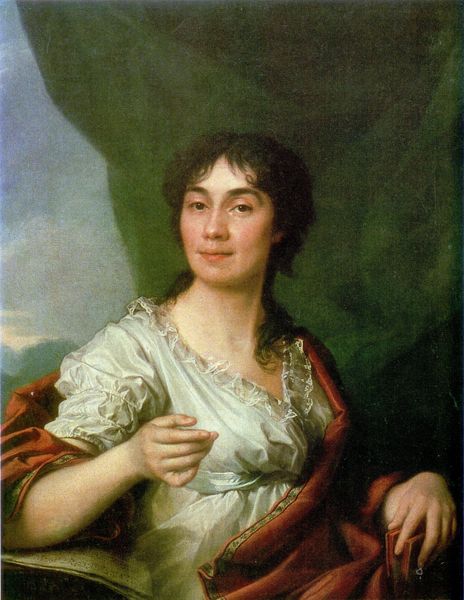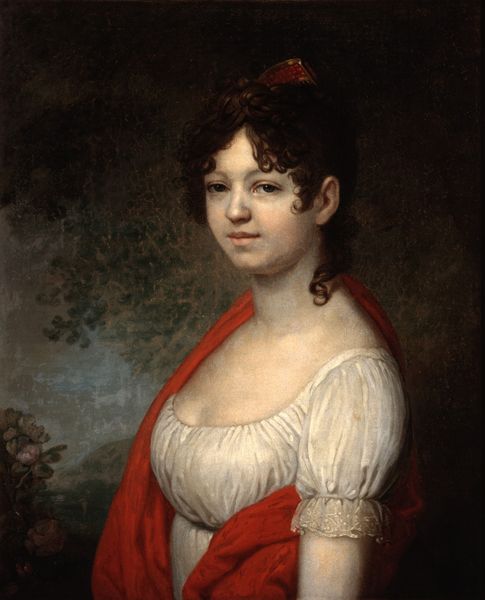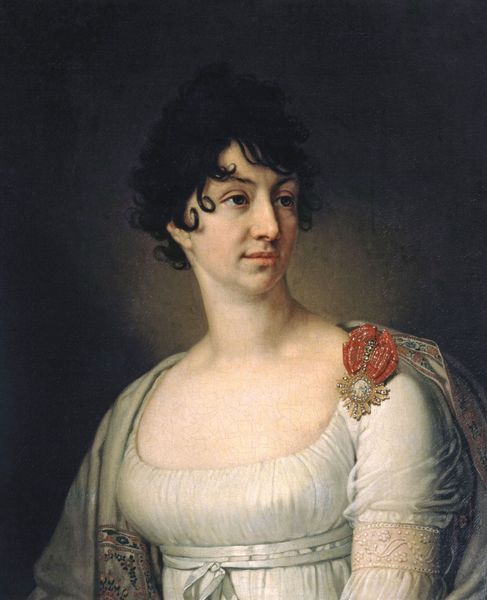
painting, oil-paint
#
portrait
#
painting
#
oil-paint
#
romanticism
Copyright: Public domain
Curator: What a serene image. I'm drawn in by the sitter's gaze, her gentle posture, and the overall soft color palette. There's an air of quiet dignity and subtle melancholy here, isn't there? Editor: It is striking. The sitter looks, in ways, defiant and vulnerable at once. For our listeners, this oil-on-canvas artwork is a portrait of Princess Lopukhina by Vladimir Borovikovsky. Though undated, it exemplifies the Romanticist aesthetic that prevailed across Europe at the turn of the nineteenth century. What elements speak most strongly of its historical context to you? Curator: The loose drapery, styled to appear classicizing while revealing more skin than was deemed proper only decades earlier, points to shifts in social mores. She's not just a noblewoman; she is embodied as an object of visual contemplation, fitting within ongoing discourse around female representation and emerging individual agency. Note her direct but placid eye contact with the viewer. Is she seeking validation, or asserting selfhood within limitations prescribed by Tsarist Russia? Editor: Her pose, leaning casually on what appears to be a marble plinth, suggests an awareness of her own status, reinforced through subtle artistic cues such as dress. The choice to set her not amidst opulent interiors but outdoors within a natural, if somewhat tamed, landscape places her both above and of that very natural world. This landscape, serving as backdrop and mirroring elements within our subject's face such as hairstyle, suggests something. What is your analysis? Curator: It is indeed interesting; landscape situates subjects both within and outside structured society—much in same manner as this painting, with Romantic elements and rigid historical constraints. What, if any, subversive element do you sense operating? Perhaps the subversion exists through a suggestion of something new just beginning at that period! Editor: Perhaps. I also find intriguing how public life intersected with these private renderings. Aristocratic portraiture frequently communicated and reinforced ideals of power and taste within social circles – but this image lacks a stiff formality! As scholars increasingly examine social frameworks structuring art's creation and reception across historical strata, what remains most critical for a 21st-century viewer like yourself to extract, ultimately? Curator: Prioritizing the experiences of women marginalized, objectified or rendered invisible across the sweep of art history demands re-examination... and active centering... within narratives moving into an unknowable future! Editor: An essential task, truly. Thank you, it's been illuminating examining Borovikovsky's subject, together, today!
Comments
No comments
Be the first to comment and join the conversation on the ultimate creative platform.


